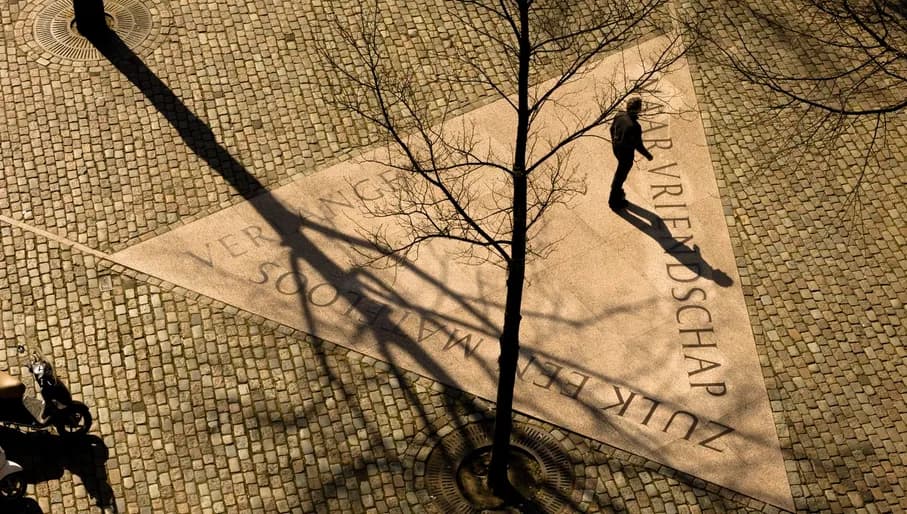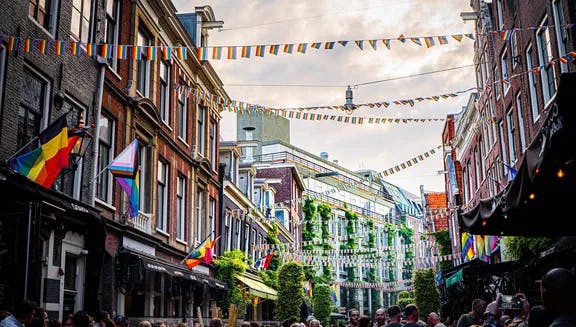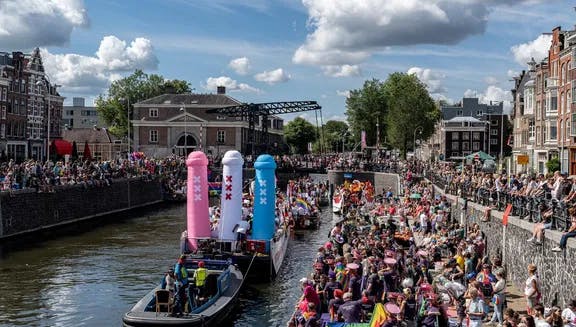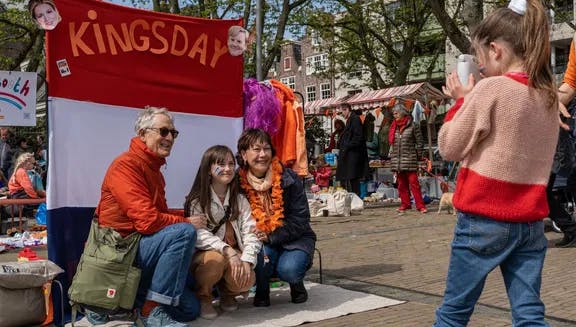
LGBTQI+ history and milestones in Amsterdam
Early milestones

1946: The COC organisation (website in Dutch) was formed. It has since been working towards emancipation for the entire LGBTQI+ community; promoting safety, visibility, events and fighting discrimination. Powered by around 85 volunteers, the organisation remains strong and active throughout Amsterdam.
1980s-1990s: Amsterdam's gay scene burst to life as bars, clubs, restaurants and shops began to open up. The openness and diversity of these institutions and businesses helped give LGBTQI+ people a sense of community as as meeting places. And many of these same institutions still exist in Amsterdam today.
1987: The unveiling of the Homomonument, which was the world's first tribute to the gay and lesbian people who lost their lives during World War II. It also commemorates all those oppressed and persecuted because of their sexuality outside of wartime. This world-renowned memorial of LGBTQI+ remembrance lies beside the Westerkerk, taking the shape of a triangle on the bank of the canal. Its three points are symbolic: one corner points towards the National War Memorial on Dam Square; another points across the canal to the site of the Anne Frank House; while the third corner points towards COC Amsterdam. It remains the largest monument in the world dedicated to homosexuality.
Pride and same-sex marriage

1996: The first edition of Amsterdam Gay Pride. It has gone on to become one of the most important Pride events in the world, and remains unique as the only one to be centred around a boat parade rather than a street parade. As its centrepiece, the Canal Parade draws upwards of 400,000 visitors annually into the heart of Amsterdam both to participate and watch.
1998: During the 1998 edition of Amsterdam Gay Pride, the city hosted the International Gay Games. This is the largest LGBTQI+ sporting and cultural event globally and takes place every four years. The 1998 Gay Games in Amsterdam featured 13,000 participants, and it was the first time the event had been hosted outside of North America. The games also helped formally establish the Roze en Blauw (Pink in Blue) police unit – a special unit of the police force dedicated to fighting hate crimes and violence directed towards LGBTQI+ people.
1998: Pink Point was established as Amsterdam's official LGBTQI+ information kiosk, situated next to the Homomonument on the Westermarkt. Pink Point provides information on the Homomonument, as well as general information on LGBTQI+ life in Amsterdam. Staffed by friendly and knowledgeable volunteers, it presents a wide range of information and flyers from local organisations.
2001: This was the year the Netherlands became the first country in the world to legalise same-sex marriage. On 1 April 2001, the first four same-sex couples were married in the city by the then Mayor of Amsterdam, Job Cohen.
21st-century inclusion

2001-2010s: Amsterdam is a city committed to the LGBTQI+ community – with a diverse range of LGBTQI+ neighbourhoods – and the 21st century welcomed several changes to illustrate this, from gender-neutral bathrooms to queer-focused music and film festivals organised by and for the community. Across the city, many cafés hang out the rainbow flag – whether they're an LGBTQI+ bar or not – to support one of Amsterdam's largest minority groups.
2023: Due to a range of new initiatives and an increasing need for representation from across the LGBTQI+ spectrum, the city of Amsterdam developed its annual Pride festival into Queer & Pride, a two-week-long program celebrating the diversity of the LGBTQI+ community. The Queer programme kicks off the proceedings with a focus on promoting equality and the inequality of opportunity, according to its organisers; while Pride Week follows up with events like the Canal Parade, and a focus on emancipation and celebration.
Related articles

LGBTQI+ neighbourhoods of Amsterdam

LGBTQI+ safe spaces and community groups

LGBTQI+ safety and resources in Amsterdam

King's Day rules and regulations

How to celebrate King's Day like a local

Getting around and practical info on King's Day

Best ways to see Amsterdam Light Festival 2024-2025

Celebrating King's Day in the Amsterdam Area

Tips for Liberation Day
